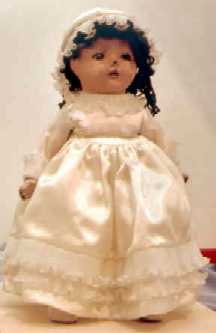 In
the mid 1920s, when relations between Japan and the U.S. were
worsening, a pro-Japanese missionary named Sidney Gulick
proposed sending dolls to Japanese schools for the purpose of
Japanese-American friendship. About 12,000 dolls, called
"Blue-eyed Dolls," were given by America with the hope of
peace and friendship. In
the mid 1920s, when relations between Japan and the U.S. were
worsening, a pro-Japanese missionary named Sidney Gulick
proposed sending dolls to Japanese schools for the purpose of
Japanese-American friendship. About 12,000 dolls, called
"Blue-eyed Dolls," were given by America with the hope of
peace and friendship.
In 1927, the Blue-eyed Dolls were given to schools throughout
Japan, but later many of these dolls were destroyed as "enemy
dolls" during World War II. Now less than 300 dolls exist in
the entire country.
A Blue-eyed Doll was given also to Kawamata Town, where there
was a relationship with the U.S. based on the export of silk
textiles since before 1900. The Blue-eyed Doll named
Dorothy, who miraculously survived the war, is kept at Kawamata
Elementary School.
The current Blue-eyed Doll Exhibition has a display of
these valuable Blue-eyed Dolls remaining in Fukushima Prefecture.
We want to recognize again the importance of peace and friendship.
|